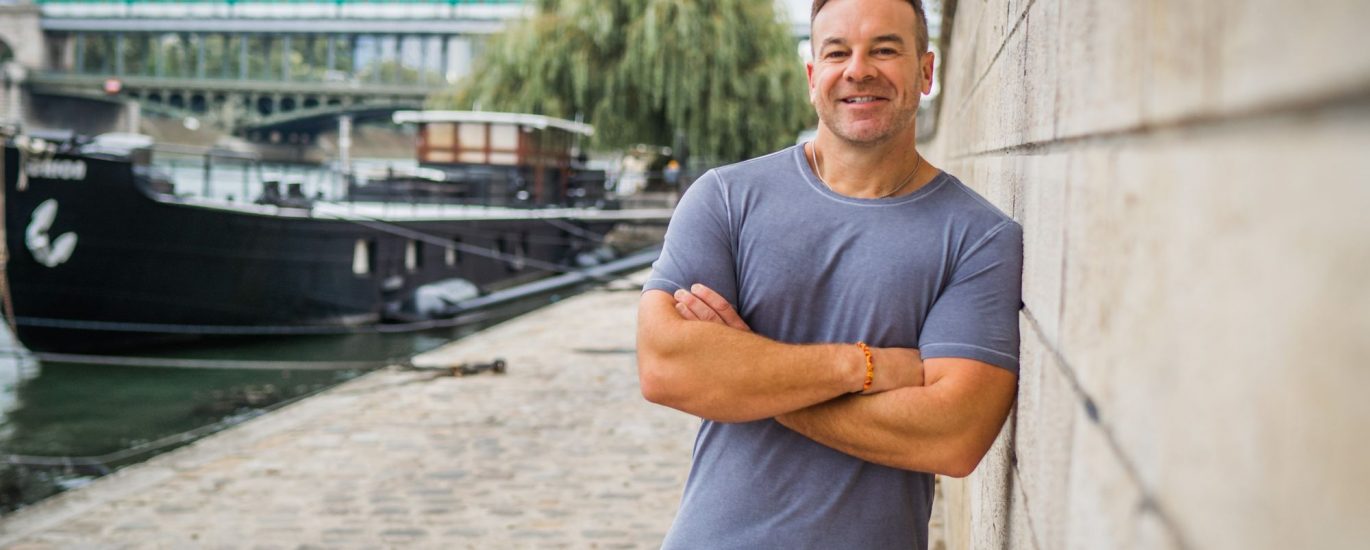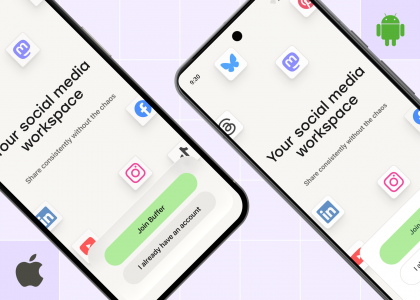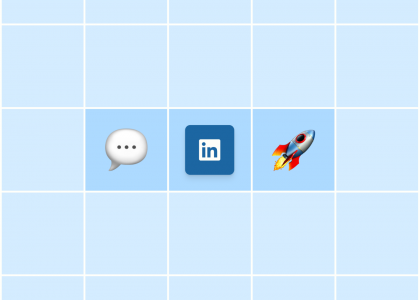Starting my company, I felt confident about two things. The first was that I had a winning idea: An Uber for lawn care. I had spent the previous 15 years running my own local lawn care company, and I knew from experience both how difficult it was for a homeowner to get a reliable lawn mowing service and how challenging it was to make a living mowing yards. I felt a technology platform could solve this problem for both sides of the marketplace.
I also knew I didn’t want to raise money. Even though, all around me, I was watching companies touting themselves as “the Uber for [insert service here]” raise millions of dollars, I was also seeing so many of them crash and burn a few years later. I was okay growing a little more slowly if it meant we were building something that would last.
Thus began a decade of slowly and steadily growing GreenPal, culminating in us hitting $30 million in revenue last year. While it’s hard to sum up ten years of growth in one article, here are some of the major steps along the way that helped us reach this milestone.
Year 1: Finding our first customers
$20,000 in revenue
The first year in business, we didn’t have any kind of user acquisition strategy. My co-founders and I had spent nearly a year building the first version of the app, and after we finished, we thought, “Man, that was really hard, glad that’s done.”
We didn’t realize the hard work had only just begun. We quickly learned that if you build it, they will not come. Our users weren’t just going to show up—we had to go find them.
So, we set a goal of getting our first 100 customers so we could get feedback (and some initial revenue), and got to work pounding the pavement, passing out door hangers and flyers all over Nashville. We had no idea what we were doing and probably passed out 300,000 to 400,000 flyers to land those first customers and get the ball rolling.
Year 2: Understanding our customers
$40,000 in revenue
With some customers under our belt, we used their feedback to refine our product, but we also got their input to help inform our marketing strategy. We asked every single customer in those early days: How do you normally hire a lawn care service?
Over and over again, we heard the same answers: They would ask family and friends for recommendations first but if that didn’t turn anything up, they would Google “lawn care service nearby” out of desperation.
We knew winning on word-of-mouth would take time. We needed to keep working on perfecting our product and service delivery before people would start talking about us. But figuring out how to get customers from Google seemed like something we could tackle in the meantime.
We decided to optimize our website and create content to try to compete for “lawn care service Nashville,”—which we quickly realized was going to be incredibly hard with how little domain authority we had. So, we pivoted to focus on lower competition keywords in towns nearby: Smyrna lawn grass-cutting service, Brentwood yard maintenance company, etc. By writing content for these smaller bedroom communities, we began to rank humbly on page one for those keywords and slowly started building traction. Moreover, we were learning the SEO game and building a repeatable process for creating content to rank for our target keywords on a town-by-town basis.
As you probably know, SEO is a long play, and it was definitely a slow burn in the beginning. But I’m glad we got the momentum going early and built a playbook that we would return to again and again in the future.
Year 3: Letting the momentum build
$120,000 in revenue
Many small companies invest in growth at the expense of the customers they already have, but it always seemed crystal clear to me that it was going to be easier to keep customers than find new ones. In many ways, not raising money was a competitive advantage because it forced us to focus on the one thing that mattered (the customer) and gave us the time to make sure we were serving them to the best of our abilities.
So, while we waited for our SEO investments to pay off, we also were always focused on keeping our existing customers happy. There are a million things that can go wrong with a lawn care service, and we experienced every one on our path of product development: Our service professionals didn’t show up on time, they only mowed the front yard, they left a gate open and left the dog out, you name it. Not only did we have to build the tech to deliver a consistent service, we had to figure out how to incentivize and teach our vendors to do a good job and hold them accountable if they didn’t.
We still weren’t paying ourselves a salary at this point because every dime went back into hiring developers and designers, hiring SEO analysts and content creators, and investing in everything we could to grow the business.
Around the end of year three, several things clicked at once. For one, we finally had a product that delighted the vast majority of people: When they pushed the button to hire somebody, that person showed up on time and did a great job. On top of that, we started seeing traction from SEO. I remember one day that 20 customers signed up, and I didn’t know who any of them were—I finally felt like maybe, possibly, this could actually work.
Year 4: Encouraging word of mouth
$360,000 in revenue
With more customers finding us through search and then having a good experience with the product, we started to see traction from word-of-mouth marketing. Once you’ve got a good product that is delighting more people than not, you get what’s called “over-the-shoulder virality.” When people find something that makes their life a little bit easier, they want to talk about it.
So, while we experimented with some referral programs to encourage word of mouth, they were largely a waste of time. The success really hinged on meeting people where they were (online searching for a solution to their problem of finding good lawn care), and then delivering on that promise so they wanted to tell everyone they knew about this great hack they discovered.
Year 5 – 8: Keep following our playbook as we scale
$1,080,000 to $9,720,000 in revenue
With a solid service model in place, the next few years were about expansion. In year five, we launched in Atlanta, Tampa, and St. Louis. In year six, we launched Columbus, Cincinnati, Pittsburgh, Philadelphia, and Baltimore. In year seven, we launched in about 20 more cities, and from that point forward just kept growing. (We’re currently in over 300 cities around the U.S.)
In each new city we added, we focused on doing more of what was already working instead of trying to be the best at multiple things. A lot of startups look at these big companies that are everywhere—crushing SEO, paid marketing, a referral program, social media—and think that’s what they need to do to succeed. But most small businesses don’t have their budgets, and so much of our success came from honing in on one channel, instead of spreading ourselves too thin.
We had a small presence on social media. We did some paid marketing in new cities just to juice the organic piece. But, mostly, we focused on carpeting the internet with our content and getting that content to rank and convert well.
Year 9: Experimenting to find our next channel
$17,496,000 in revenue
We’ve only recently reached the point where we had enough revenue that I felt we could invest in experimenting to find our next big marketing channel. Even though we’ve achieved huge growth strides, lawn care is a $99 billion dollar industry, so we’re still just a drop in the bucket.
In the past few years, we’ve been doing a lot of research and development around our marketing, but there’s always a tradeoff between trying to bust open a new channel versus doubling down on what we’re already good at.
For instance, we’ve tested some influencer campaigns (yes, believe it or not, lawn care TikTok is a thing). While this saw some traction—within a year, we were able to grow the revenue we attracted from influencer marketing by 500 percent—that is still such a small amount of revenue compared to organic search, which still drives half of our users today. It begs the question: Should we try to put more gas on these new strategies? Or would we be better off investing that money into hiring another content writer or hiring a technical SEO specialist?
In our early years, we were right to put more resources into what we were already good at. But now, we’re going to have to grow into unlocking another channel. And since we don’t yet know what that’s really going to be, we’re going to just keep experimenting.
Year 10: Celebrating every win
$30 million in revenue
Obviously, we’ve had some pretty big milestones to celebrate along the way. But so much of our success has been about taking our growth step by step. It took us forever to get our first 100 customers, but I knew if we could get to 100, we could get to 1,000, and if we could get to 1,000, we could get to 10,000, and so on. Recognizing and celebrating those small wins really kept us motivated.
My advice to other small business owners: Don’t get bent out of shape if your company isn’t huge yet. Know that the efforts you’re putting in don’t add up, they compound over time. That’s how we got to where we are today, and I can’t wait to see where it carries us over the next ten years.






